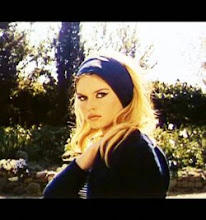
date watched: May 5, 2009
location: at home, thanks to Netflix Instant!
This is a confession: Shall We Dance is the first Astaire-Rogers musical I've seen. (To add to my embarrassing film knowledge deficiencies--don't laugh--there are Hitchcock's Vertigo (1958), Renoir's La Grande Illusion (1937), Rocky (1976), Silence of the Lambs (1991)... Oh, and so much more.)
And boy, was I wrong, to condemn the musical movie all this time.
It's true that there isn't much room for modern musicals on the DVD shelves nowadays, but there's a reason why we keep going back to Singing' in the Rain (Stanley Donen & Gene Kelly, 1952) on a gloomy day (like NYC today, for instance).
Now that I've said all that, it's hard not to compare Astaire and Kelly. If Astaire were still dancing in movies today, he would be called "metrosexual" for sure. His hair is always sleek and combed, his face is wrinkle-free and smooth, and he always looks so sharp in his tailcoats. On the other hand, Kelly is the paragon of male machismo, musical version. There are always two or three too many buttons left unopened, and his muscular movements and cheek scar spells M-A-N. Thank goodness he has that endearing beam, else he'd sound/look like a gangster.
Truly the best sequence in Shall We Dance is the skate-tap dancing number in the park. YouTube has it, conveniently:
http://www.youtube.com/watch?v=jdH2ODFYV5s
We're so used to buildings being blown up and other forms of mass destruction in mindless blockbusters that we forget the spectacle of the pure human form. And of course, dance is the pinnacle of that form. And Fred Astaire and Ginger Rogers are the Titans in the Land of Dance. As I showed my sister this, she remarked, "I didn't know you could tap dance with skates!" Well, if you're Astaire and Rogers, you can. I shouldn't even bother wasting words describing the miraculous phenomenon. Just click and watch.

I imagine Rogers didn't have time to gain weight, even if she wanted to, what with all the practices and the multiple takes while shooting these musicals. Her sheer energy demonstrated in all these numbers is hidden underneath her smile, and Astaire's ease. But that was Rogers in the 30s. Come 50s, and Rogers is obviously too old to tap dance on heels and skates, much less flats alone. I almost didn't recognize her in Monkey Business (Howard Hawks, 1952), if it weren't for her voice! I guess that's what happens when you retire from a job that requires so much locomotion. Let's all take this as a warning to our future selves and stay in tip-top shape!


No comments:
Post a Comment